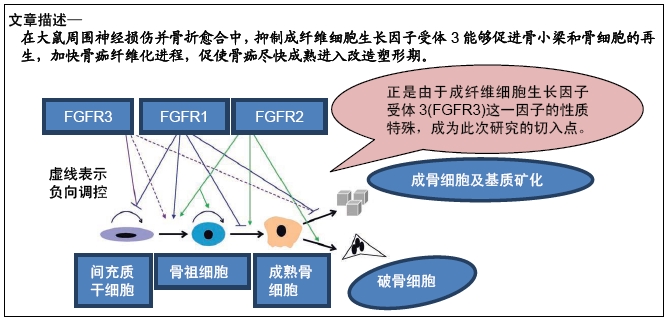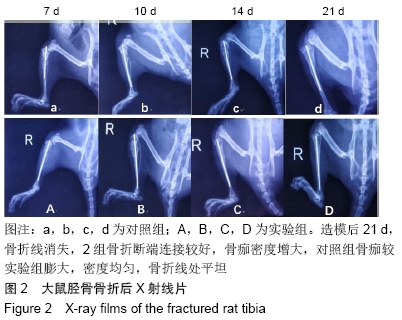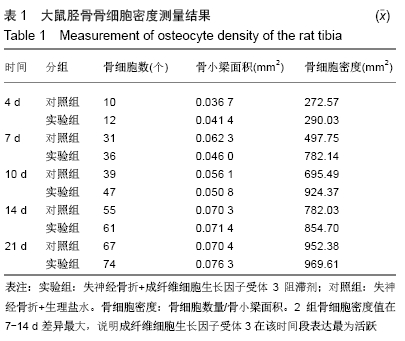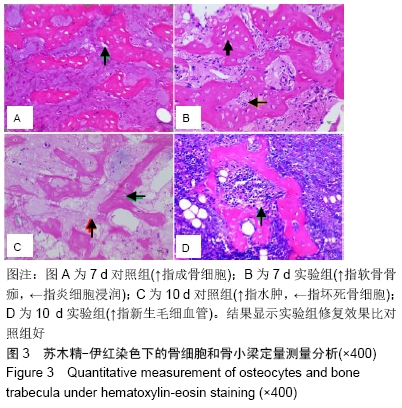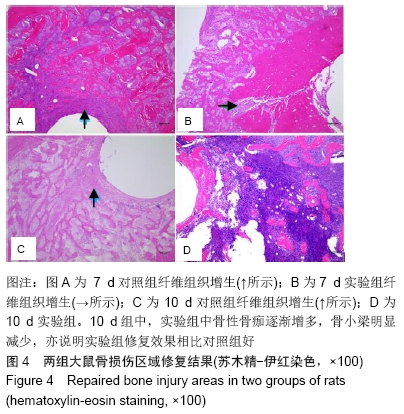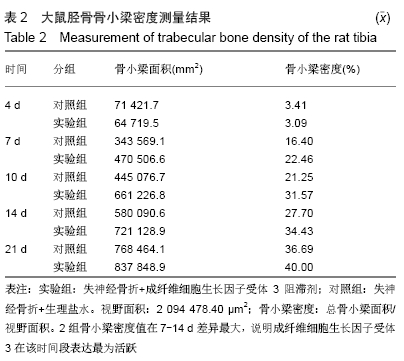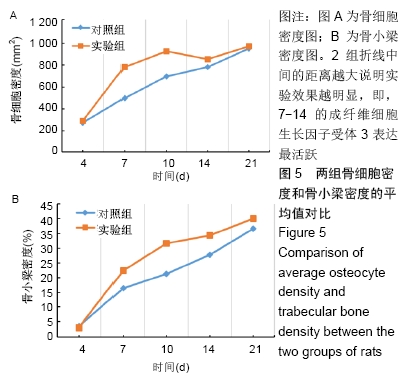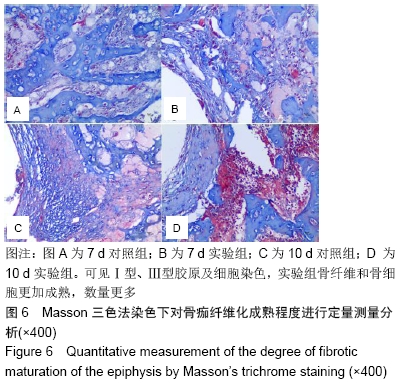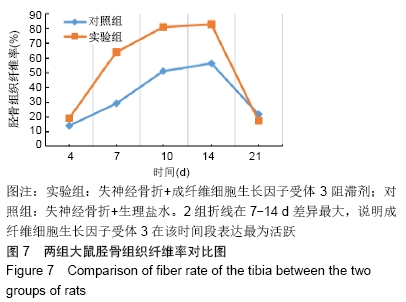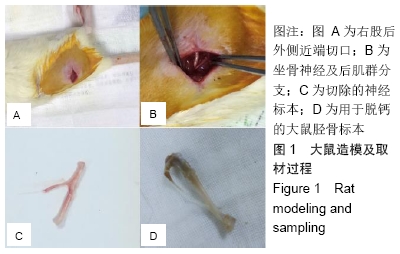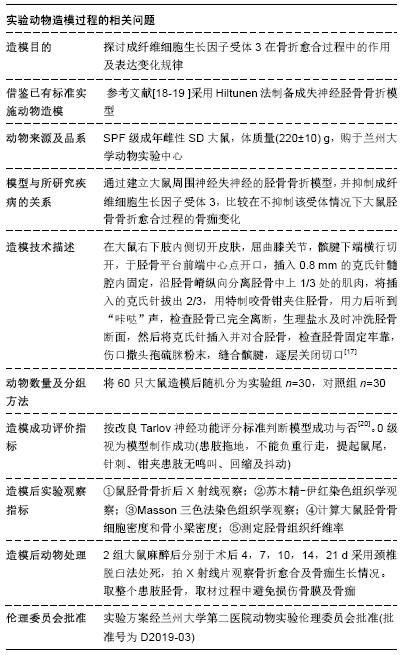[1] CHABOK SY, SAFAEE M, ALIZADEH A, et al. Epidemiology of traumatic spinal injury: a descriptive study. Acta Med Iran.2010;48(5):308-311.
[2] MADSEN JE, HUKKANEN M, AUNE AK, et al. Fracture healing and callus innervation after peripheral nerve resection in rats. Clin Orthop Relat Res. 1998;(351):230-240.
[3] SINGH ROOP, ROHILLA RAJESH KUMAR, SAINI GAURAV, et al. Bone Mineral Density and Biochemical Markers of Bone Turnover During the First Year of Injury in Patients with Spinal Cord Injury. Journal of Orthopaedics, Trauma and Rehabilitation.2014;18(1):2-6.
[4] ZURA R, WATSON JT, EINHORN T, et al. An inception cohort analysis to predict nonunion in tibia and 17 other fracture locations. Injury. 2017; 48(6):1194-1203.
[5] XIAO W,YANG X,WANG Y,et al.Splenectomy delays fracture healing by affecting the level of tumor necrosis factor alpha, interleukin 6 and bone morphogenetic protein. Adv Clin Exp Med. 2018;27(2):165-171.
[6] 彭雄文, 沈乐园,王维达,等.通过血象变化判断神经母细胞瘤患者骨髓累及情况[J].医学研究杂志,2018,47(10).
[7] BAJAYO A,BAR A,DENES A,et al.Skeletal parasympathetic innervation communicates central IL-1 signals regulating bone mass accrual. Proc Natl Acad Sci U S A. 2012;109(38):15455-15460.
[8] WANG T, CAO J, DU ZJ, et al.Effects of sympathetic innervation loss on mandibular distraction osteogenesis.J Craniofac Surg. 2012;23(5): 1524-1528.
[9] KIZILAY Z, AKTAS S, KAHRAMAN NC, et al.Effect of systemic application of bone marrow-derived mesenchymal stem cells on healing of peripheral nerve injury in an experimental sciatic nerve injury model. Turkish Neurosurgery.2017;28(4).
[10] 李闪,汪涵,苏华,等.应用PCR-HRM技术进行FGFR3热点突变的快速诊断[J].中华医学遗传学杂志, 2017,34(4):494.
[11] ZHANG H, WANG H, ZENG C, et al.mTORC1 activation downregulates FGFR3 and PTH/PTHrP receptor in articular chondrocytes to initiate osteoarthritis. Osteoarthritis Cartilage. 2017;25(6):952-963.
[12] SU N, YANG J, XIE Y, et al.Gain-of-function mutation of FGFR3 results in impaired fracture healing due to inhibition of chondrocyte differentiation. Biochem Biophys Res Commun. 2008;376(3):454-459.
[13] MONTONE R,ROMANELLI MG, BARUZZI A, et al.Mutant FGFR3 associated with SADDAN disease causes cytoskeleton disorganization through PLCγ1/Src-mediated paxillin hyperphosphorylation.Int J Biochem Cell Biol. 2018;95:17-26.
[14] 吴卓,赵敏,王永红,等.细胞凋亡在失神经骨折愈合过程中的作用机制[J].中国矫形外科杂志,2014, 22(22):2083-2088.
[15] 赵军伟,李争争,李康,等.成纤维细胞生长因子受体3在失神经骨折愈合过程中对骨痂矿化的实验研究[J].中国矫形外科杂志, 2017,24(10):912-916.
[16] The Ministry of Science and Technology of the People’s Republic of China. Guidance Suggestions for the Care and Use of Laboratory Animals. 2006-09-30.
[17] 陈华.医学实验动物学[M].北京:军事医学科学出版社,2013.
[18] HILTUNEN A, VUORIO E, ARO HT.A standardized experimental fracture in the mouse tibia. J Orthop Res.1993;11(2): 305-312.
[19] CAO H, ZHANG Y, QIAN W, et al.Effect of icariin on fracture healing in an ovariectomized rat model of osteoporosis.Exp Ther Med.2017;13(5): 2399-2404.
[20] 吴卓,汪玉良.脊髓损伤动物模型的研究进展[J].中国矫形外科杂志,2014, 22(12):1086-1089.
[21] 郑智勇,吴文钰.图像分析仪与定量诊断病理学[J].诊断病理学杂志,1996, 3(4):246-247.
[22] 秦川,邓巍,徐艳峰,等.实验动物比较组织学彩色图谱[M].北京:科学出版社, 2017.
[23] HAUDEK SB,TRIAL JA, XIA Y, et al.Fc Receptor Engagement Mediates Differentiation of Cardiac Fibroblast Precursor Cells. Proc Natl Acad Sci U S A. 2008;105(29):10179-10184.
[24] KONDO M, KONDO H, MIYAZAWA K, et al.Experimental tooth movement- induced osteoclast activation is regulated by sympathetic signaling.Bone. 2013;52(1):39-47.
[25] TADEUSZ N, JOANNA F.Bone remodeling in the context of cellular and systemic regulation: the role of osteocytes and the nervous system. J Mol Endocrinol. 2015;55(2):R23-36.
[26] WANG P, YANG HP, TIAN S, et al.Oxytocin-secreting system: A major part of the neuroendocrine center regulating immunologic activity. J Neuroimmunol. 2015;289:152-161.
[27] MATTHEWS DW, DESCHÊNES M, FURUTA T, et al.Feedback in the brainstem: An excitatory disynaptic pathway for control of whisking. J Comp Neurol. 2015;523(6):921-942.
[28] AGHA EE, KOSANOVIC D, SCHERMULY RT, et al.Role of fibroblast growth factors in organ regeneration and repair. Semin Cell Dev Biol. 2016; 53:76-84.
[29] 杜培娟.成纤维细胞生长因子及其受体抑制剂的研究进展[J]. 化学与生物工程,2014,31(12):4-8.
[30] 张勇仓,李丽玲,陈小佳,等.人成纤维细胞生长因子受体2Ⅲc及其突变型重组腺病毒的获得和在乳腺癌细胞中的表达[J].生物工程学报,2010,26(3): 363-370.
[31] MORLEY J, MARSH S, DRAKOULAKIS E, et al. Does traumatic brain injury result in accelerated fracture healing?. Injury. 2005; 36(3):363-368.
[32] COLNOT C,THOMPSON Z, MICLAU T, et al. Altered fracture repair in the absence of MMP9. Development. 2003; 130(17):4123.
[33] 刘慧中.FGF8及FGFR3在大骨节病软骨细胞异常分化过程中的作用研究[D].广州:广东药学院,2016.
[34] JULIAN S, NICHOLAUS M, SANDRA R, et al.Intramembranous bone formation after callus distraction is augmented by increasing axial compressive strain. PLoS One. 2018;13(4):e0195466.
[35] HU K, OLSEN BR.Osteoblast-derived VEGF regulates osteoblast differentiation and bone formation during bone repair. J Clin Invest. 2016;126(2):509-526.
[36] 郭海东,杨润芳,刘馨钰,等.发烟饼烟雾急性暴露对大鼠血清氧化应激的影响[J].癌变•畸变•突变, 2019, 31(1):41-44,48.
[37] 赵承承,陈建泉,吕纯业.转染miRNAs降低脂多糖诱导的大鼠肠微血管内皮细胞水通道蛋白1表达[J].基础医学与临床, 2019, 39(1):42-46.
[38] PERCIVAL CJ,RICHTSMEIER JT.Angiogenesis and intramembranous osteogenesis. Developmental Dynamics. 2013,242(8):909-922.
[39] BONADIO MB, FRIEDMAN JM, SENNETT ML,et al.A retinaculum- sparing surgical approach preserves porcine stifle joint cartilage in an experimental animal model of cartilage repair. J Exp Orthop. 2017;4(1):11.
[40] JIN Z,SUN Y,GUAN Y,et al.A Novel Rat Model of Intramedullary Tibia Fracture Fixation Using Polyetheretherketone Threaded Rod. Plast Reconstr Surg Glob Open. 2015;3(6):e417..
[41] 王守丰,邱勇.软骨内成骨的调控[J].中华外科杂志, 2006,44(16):1147-1149.
|
